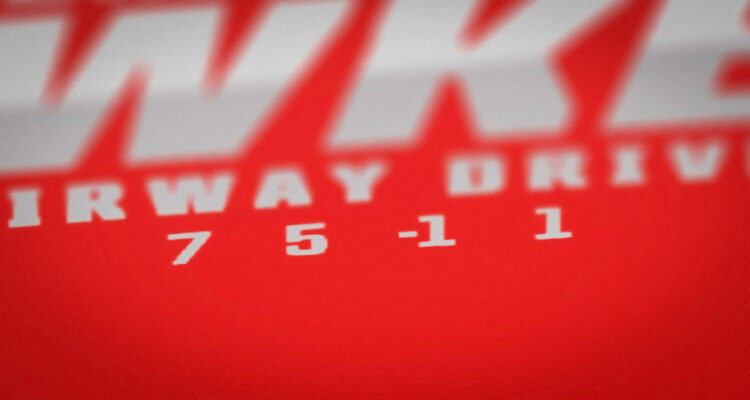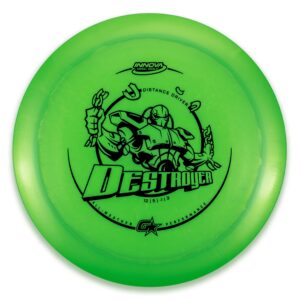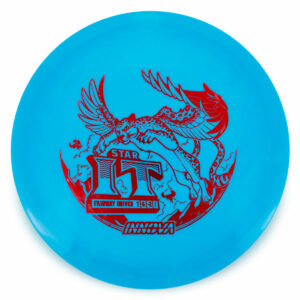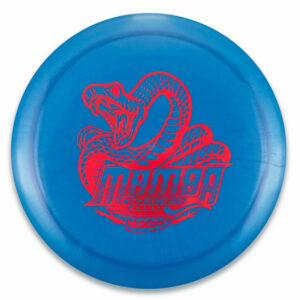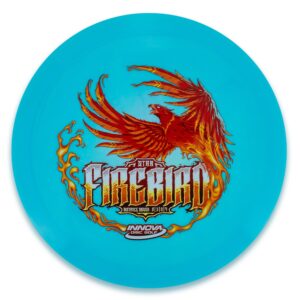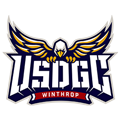An In-Depth Explanation of Innova’s Flight Ratings System
The Flight Ratings System was designed to help you know how a disc will fly before you’ve had a chance to throw it. This useful tool will make disc selection based on your desired flight path easier. Before we dive in, note that these are merely guidelines. Each disc will fly a little differently for each thrower based on arm speed and throwing style.
The four number Flight Ratings System was developed by Innova Co-founder, Dave Dunipace, to help explain the flight characteristics of different discs. The numbers explain four traits which vary from disc to disc: Speed, Glide, Turn, and Fade. It is important to note that within the Flight Ratings System, Glide, Turn, and Fade can only be used to help compare discs of the same Speed. For example, the flight numbers cannot be used to help compare the Turn of a Midrange with the Turn of a High Speed Driver. The numbers also can’t be used to compare discs between different companies. So what exactly do Speed, Glide, Turn, and Fade mean?
SPEED:
Speed is a measure of a disc’s optimum rate to fly through the air. Discs marked with a higher number are more aerodynamic and can therefore maintain a higher speed in flight than discs marked with a lower number. Our scale ranges from 1 to 14, with 1 being slowest and 14 being fastest. Discs marked with a higher number will generally have a wider rim than those with a lower number. Faster discs cut into the wind with less effort and will make good choices when throwing into a headwind. Slower discs are easier to throw more accurately and may actually go farther than a faster disc when thrown with a tailwind. High speed discs are not usually recommended for beginners as they require more power to fly properly.
Note for New Players:
Because they are more aerodynamic and can cut through the wind more easily, faster discs perform better into a headwind than slower discs. So while a newer player should not try to throw a high speed driver when the wind is still, a high speed driver might make a good utility disc for when throwing into a stiff headwind. On the other side of that point, discing down to a slower disc with more glide, when throwing with a tailwind, allows for a straighter flight and often results in a drive that goes farther.
GLIDE:
Glide describes the disc’s ability to maintain loft during flight. Our numbers range from 1 to 7 with 1 being the least Glide and 7 being the most Glide. Discs with a Glide rating of 1 or 2 fall out of the air quickly and are more difficult to throw far. That can be a desirable trait for players who like to throw full power even on shorter range shots. It also makes lower Glide discs less susceptible to getting blown around by the wind. Discs with a Glide rating of 5 or 6 will stay in the air longer and will be easier to throw far in a tailwind or no wind. That said, they can be difficult to control distance with and are more susceptible to changing wind conditions.
Discs with more Glide are best for new players, and for producing maximum distance. Discs with less Glide should be leaned on in high wind conditions.
Star Animal
SPEED: 2 | GLIDE: 1 | TURN: 0 | FADE: 1
HIGH-SPEED TURN:
Turn is the tendency of a disc to “turn over” or bank to the right for right handed, backhand throws, during the initial part of the flight. For right handed forehands or left handed backhands, Turn is the tendency of the disc to bank to the left. The numbers range from +1 to -5. A disc with a +1 rating is most resistant to turning over, while a disc rated -5 will turn the most. If a disc with a high Turn rating such as -4 is released on an extreme hyzer angle, it may not bank to the right at all, but merely flip up to flat and fly straight. The tendency of the disc to deviate from its release angle in such a way is also an element of Turn. Discs rated -3 to -5 are good for rollers. Discs with less turn are more accurate in the wind. Discs with more turn tend to be easier to throw for beginners.
Technical Note:
Discs thrown faster than their optimum speed relative to the wind, will turn more. Discs thrown slower than their optimum speed will turn less, if at all. Cross winds make things even more complicated. For a right handed, backhand throw, a left to right cross wind will make the disc turn more if the bottom of the flight plate is shown to the wind. For right to left wind, the disc will turn less if the bottom of the flight plate is shown to the wind.
LOW-SPEED FADE:
Fade refers to the natural tendency of a disc to hook to the left for right handed, backhand throws (or to the right for left handed, backhand throws) as the disc loses speed at the end of its flight. Nearly all discs start to fade as they lose speed, but some hook harder than others. The ratings range from 0 to 5. A disc rated 0 for Fade will finish straightest and hook the least. A disc rated 5 will fade or hook hardest at the end of the flight. Discs with a high Fade rating are most predictable in heavy winds. Discs with a lower Fade make the best option when playing straighter holes in the woods where a hard finish at the end of the flight might leave you off the fairway. Fade is highly dependent on the nose up angle of release. The more nose up the disc is when released, the faster and sharper the disc will fade.
Star XCaliber
SPEED: 12 | GLIDE: 5 | TURN: 0 | FADE: 4
Factors that Affect Flight Characteristics
As a disc hits more and more objects, its flight characteristics will change, especially Turn and Fade. As discs wear, they tend to turn more and fade less. Baseline plastics such as DX will wear more quickly while premium plastics like Champion, Star, and GStar retain their original flight characteristics for longer. For more on this, check out our article on disc cycling.
Elevation will have an impact on flight characteristics as well. Just a few thousand feet of elevation gain will be noticeable in how your discs fly. Say you are playing at 5,000 feet, but are used to throwing at sea level; your discs will glide less, turn less, and fade more. It may also feel like you need to throw them faster to get your desired flight. The higher in elevation you go, the more pronounced this effect will be.
What is Off-Axis Torque?
Off-axis torque is a common throwing error that affects the flight of the disc. When a disc flutters out of your hand as it is released, that tends to make the disc want to turn more. While that is not always a bad thing, generally newer players are not using off-axis torque intentionally, but rather they have not yet learned how to release cleanly. Off-axis torque is a force applied to the disc that is not on the angle or in the direction of intended release. If you roll your wrist at the end of a shot meant to be thrown on a hyzer angle, that will create flutter. You are robbing the disc of spin and forward momentum when you release with off-axis torque, and are ultimately limiting your potential for accurate distance.
The flight ratings system is a helpful tool, but with so many elements coming into play that affect flight characteristics, the system is not without its limits. One player might find that a disc with a Glide rating of 5 stays in the air longer for them than a disc with a rating of 6. His friend might throw the same disc and discover that the opposite is true because they have different arm speeds and throwing styles. Flight numbers are guidelines to make disc selection easier. Experiment with different molds and learn what discs work best for you.
View this post on Instagram


